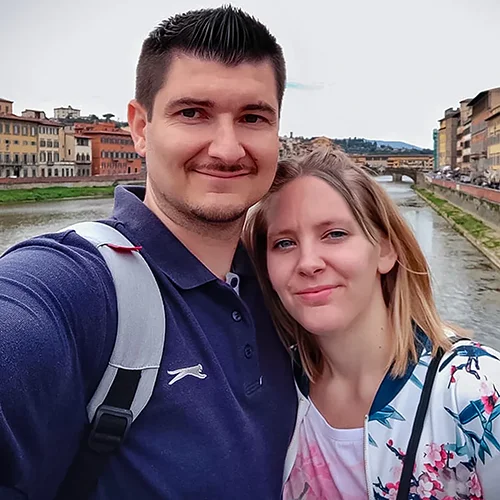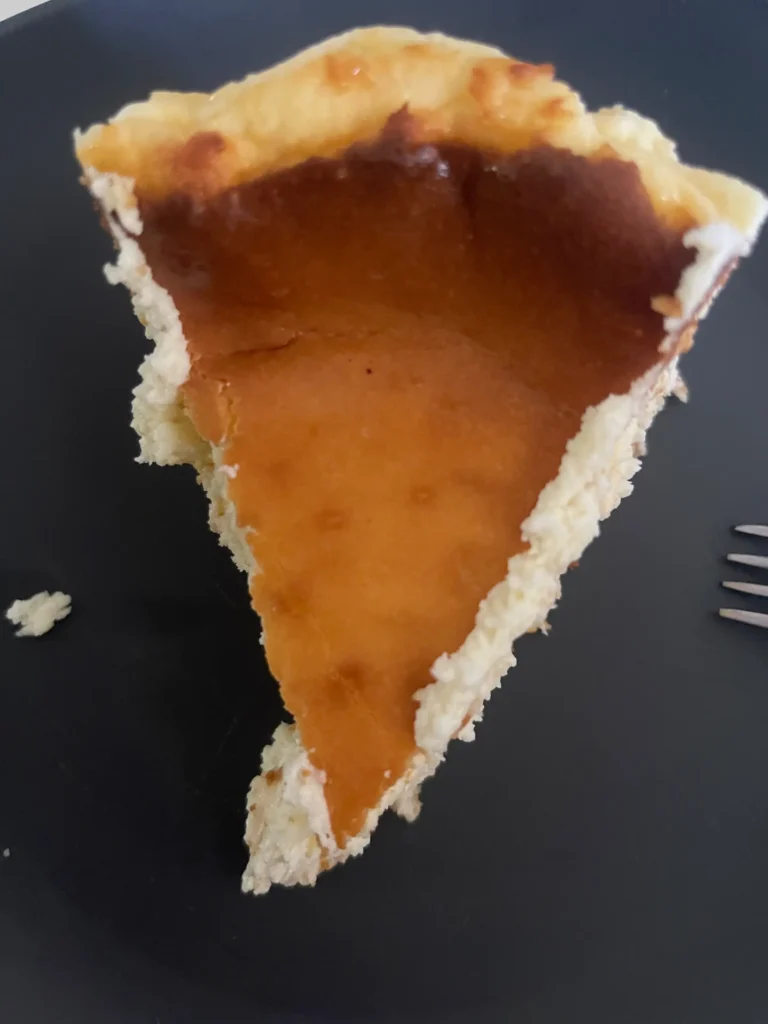7 reasons why this Valencian cheesecake is simply irresistible
7 reasons why this Valencian cheesecake is simply irresistible
7 reasons why this Valencian cheesecake is simply irresistible
7 reasons why this Valencian cheesecake is simply irresistible
10. Oktober 2024
Feedback: 0
“One bite—and you’re in Valencia.”
Imagine this: you’re sitting in a small, sun-drenched café on Plaza de la Reina in Valencia. The air smells of fresh coffee, citrus blossoms, and a hint of almond bread. In front of you is a slice of Valencian cheesecake – creamy, delicate, with a hint of lemon that makes your taste buds dance. Not a heavy, quark-laden cake like the ones from grandma’s bakery, but something light, aromatic, almost airy.
That’s exactly how I first encountered it. And since then? I’ve been hooked. Not just on the taste, but on the feeling it conveys: summer, lightness, enjoyment without regret.
If you’re thinking, “But I never bake!” – then this Valencian cheesecake is just right for you. Not only is it incredibly delicious, but it’s also easy to make, healthy, and above all, homemade with natural ingredients. And that doesn’t just make it better—it makes it really good.
So grab your apron, leave your everyday life outside the door for a moment, and let’s dive into the world of Spanish cheesecake together.
Why you should definitely try this Valencian cheesecake
I know what you’re thinking: “Another cheesecake? Haven’t I seen a thousand recipes already?”
Yes, probably. But this one is different. And not just a little bit—a lot.
The Valencian cheesecake (also known as Tarta de Queso Valenciana) is a traditional dessert from Valencian cuisine, not a heavy, floury baked cake that makes you feel guilty after the second slice. No. It’s creamy, citrusy, light on the stomach—and tastes like a vacation on a plate.
The best thing about it is that it doesn’t contain any unnecessary additives. No packet mixes, no artificial flavors, no cheap fillers. Instead: cream cheese, eggs, lemon, a little sugar—and love.
Why homemade is better—and healthier
Let’s be honest: most cheesecakes we buy at cafés or bakeries are full of hidden sugar, industrial fats, and preservatives. This is so that the dough lasts longer, the cream is more stable, and the whole thing looks “professional.”
But what’s the point if, first of all, you feel tired afterwards, secondly, you have a stomach ache, and thirdly, you think, “I should have eaten salad instead…”?
With homemade Valencian cheesecakes, you decide what goes in them:
◉ Choose high-quality cream cheese or ricotta – preferably organic.
◉ Decide the amount of sugar – less is often more.
◉ Use fresh lemons instead of artificial flavoring.
◉ And you can even use plant-based alternatives if you like.
Homemade means complete control over the ingredients—and that means more enjoyment, healthy, more conscious, and guaranteed without regret.
Recipe: Valencian cheesecake – simple, creamy, irresistible
| Cook Time: | 40 min |
| Prep Time: | 20 min |
| Total Time: | 60 min |
| Category: | Cake |
| Cuisine: | Spain |
| Yield: | 10-12 |
| Method: | Baking |
2. Prepare the filling: Preheat the oven to 350°F (180°C). Mix cream cheese, sugar, and vanilla sugar until smooth. Beat in the eggs one at a time, then add cream, lemon juice, lemon zest, and cornstarch.
3. Baking: Pour the filling onto the crust and bake for 35-40 minutes. Let it rest in the turned-off oven for 10 minutes.
4. Cooling: Allow the cake to cool completely, ideally letting it chill in the fridge for 4 hours. Optionally garnish before serving.
* 100 g melted butter
* 600 g cream cheese (or ricotta)
* 200 g sugar
* 4 eggs
* 200 g heavy cream
* 1 tsp vanilla extract
* Juice and zest of one organic lemon
* 2 tbsp flour (for perfect texture)
* Optional: A pinch of cinnamon for extra flavor
Serving suggestions: How to enjoy a Spanish cheesecake?
Spanish cheesecake is delicious on its own, but if you want to add a little extra, here are some great options:
◉ With fresh berries: Strawberries, raspberries, or blueberries go wonderfully with the creamy texture and the light lemon flavor.
◉ Drizzle with honey: A touch of honey gives the cake a sweet, Mediterranean note.
◉ Dust with powdered sugar: For the classic look and a light crunch.
◉ For vegans & lactose-free: For a vegan version, simply use plant-based cream cheese (e.g., from almonds or cashews), replace the eggs with chia seed gel (2 tbsp chia seeds + 6 tbsp water = 3 eggs), and swap the cream for coconut cream.
◉ With an espresso or Spanish coffee: perfect coffeehouse atmosphere.
The difference from other cheesecakes
You might be wondering what makes this Spanish cheesecake different from other versions. Compared to a German cheesecake, which is often made with quark, the Spanish one is much creamier and richer. It’s more like a New York cheesecake, but the lemon and the use of cream cheese or ricotta give it a lighter, fresher flavor.
🔍 The secret 🔍
It is often baked in a water bath, which ensures that it does not crack and takes on a velvety, almost wobbly consistency—similar to Japanese soufflé cheesecake. And the lemon makes the cake fresh and lighter.
Health benefits: Why this cheesecake is (almost) healthy
Yes, you read that right: almost healthy.
Of course, cheesecake is not a low-calorie snack—but compared to other desserts, Valencian cheesecake scores really well:
◉ Less sugar than traditional cakes: The citric acid makes the cake taste sweeter than it is. This way, you can use less sugar – and still fully enjoy it.
◉ High in protein from eggs and cheese: Eggs and cream cheese provide high-quality protein, which is filling and good for muscle building and recovery.
◉ Without flour or much fat: Unlike many other cakes, this one is flour-free (except possibly a small amount of cornstarch). This makes it easier to digest.
◉ With natural flavors: No artificial lemon-flavor chemical cocktail – just real lemon, which is also rich in vitamin C and strengthens the immune system.
How do you store your Valencian cheesecake?
When stored correctly, cheesecake stays fresh for a surprisingly long time: it will keep in the refrigerator (in an airtight container) for up to 5 days, or frozen for up to 3 months – it is best to freeze it without the topping and garnish it fresh before serving.
💡 Tip 💡
If you freeze it, it’s best to cut it into pieces beforehand and wrap them individually – that way you can enjoy just one piece whenever you feel like it. “Oh, just a little piece…” – we all know how that goes.
Why Valencian cheesecake is so popular
In Valencia, and throughout Spain, cheesecake is one of the most beloved desserts. Maybe it’s the simplicity of the ingredients or the irresistible creaminess, but one thing’s for sure: eating a slice feels like a mini vacation in Spain. Especially if you pair it with a “Café con Leche”—all you’re missing is the Mediterranean breeze.
Stay connected & share your love of cheesecake!
Did you like the recipe? Then leave me a star rating—or even better, write me a comment telling me how your cheesecake turned out!
And if you know someone who needs something delicious, authentic, and homemade – share this post. Because enjoyment is better when shared.
¡Buen provecho – and see you next recipe!
Yours Steffi & Marius
Discover more popular recipes
Want to enjoy more delicious food? Why not try:
Pumpkin cookies – the perfect recipe for fall (vegan & gluten-free) – Perfect for the beginning of fall
Recipe for the anti-sniff-deluxe vitamin C cocktail – Fight the dreary weather with our vitamin booster

Wir sind zwei deutsche Auswanderer und auf emigres-life nehmen wir Dich mit auf unsere Reise in ein neues Leben.
In unserem Projekt schwingt das Pendel meist in Richtung stressig oder chaotisch und weniger in Richtung tiefenentspannt.
Wenn du also wissen willst, in welches Fettnäpfchen wir als nächstes treten oder welche Hürden vor uns liegen und wie wir sie überwinden, dann bleib dran.
Nächster Blogpost
Schockierend einfach: Kürbispüree selbst machen – Die 1-Zutat-Methode
Vorhergehender Blogpost
Kostenvergleich: Deutschland vs. Spanien – Wo lebt es sich günstiger?


 Pin it!
Pin it!

